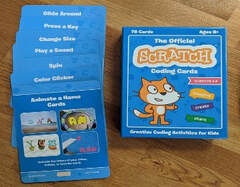 Written by Stefanie Reda, Fordham PDRC As educators, we understand the value of infusing STEM curriculum into our classrooms. Children are engaged when they are allowed to think outside the box, use hands-on manipulatives, design, construct and test their innovations. We can foster this enthusiasm in our classroom in numerous ways. One said way is through coding. We are at a time when children are exposed to coding all around them - from video games, various websites utilized for instruction within classrooms, social media, etc. Coding can be defined as the language we use to communicate with computers.Coding becomes very exciting for students when they realize that they can create their own projects or programs using resources at their fingertips. They can think of themselves as developers, creators, and engineers. Students understand that steps occur in sequential order- they are logical. If we expose them to this rationale, we are able to apply this to our technology curriculum. Coding can start as young as kindergarten with guidance and lead to a prominent career if fostered. Children as young as 5 years old understand algorithms needed to code based on concepts they have learned to perform everyday activities.There is a process to complete a task - steps that need to be completed before the next step can begin.This is computational thinking. It needs to add up correctly. Exposing our students at a young age to computer science shows them all the possible tasks that can be accomplished.It is beneficial for students to prepare for their future early on with practices that open their minds to vast possibilities. Teachers can use this as an opportunity to discuss STEM related careers at an early age.Students must first understand the elements of coding before they begin. Explaining that the computer uses its own language is the first step in introducing them into designing software. There are different coding languages a computer utilizes. For ease of use in instructing young learners, a teacher might want to explore block-based coding. This is a drag and drop feature that elementary students will find easier to use. Allowing students to explore the features of any coding program you use to instruct will put them at ease with the features.The most efficient way to learn is a hands-on method. I would advise teachers to explain the features of the program on a smartboard or projector. This will help guide their learning. Trial and error is the best way to explore STEM areas of learning - it is scientific! Being familiar with coding terms allows students to follow the instructions that teachers will use to teach coding. The webinar will discuss some of the terminology teachers can refer to when instructing the students on how to code in the classroom. The process discussed in STEM/SEL: Coding for Beginners K-5 delivered by Jaclyn Morales, discusses the benefits of coding in the following areas for students:
 One program discussed in our webinar from Jaclyn Morales is a site called Scratch. This site was developed by MIT and is very user friendly. It provides step by step guidance for teachers. The webinar will explain the four elements of using scratch:
0 Comments
|
Archives
January 2024
Categories
All
|
